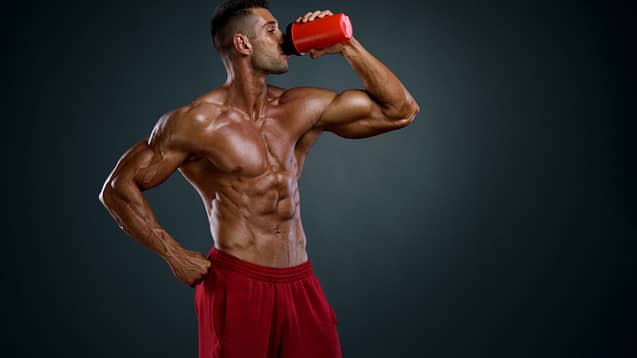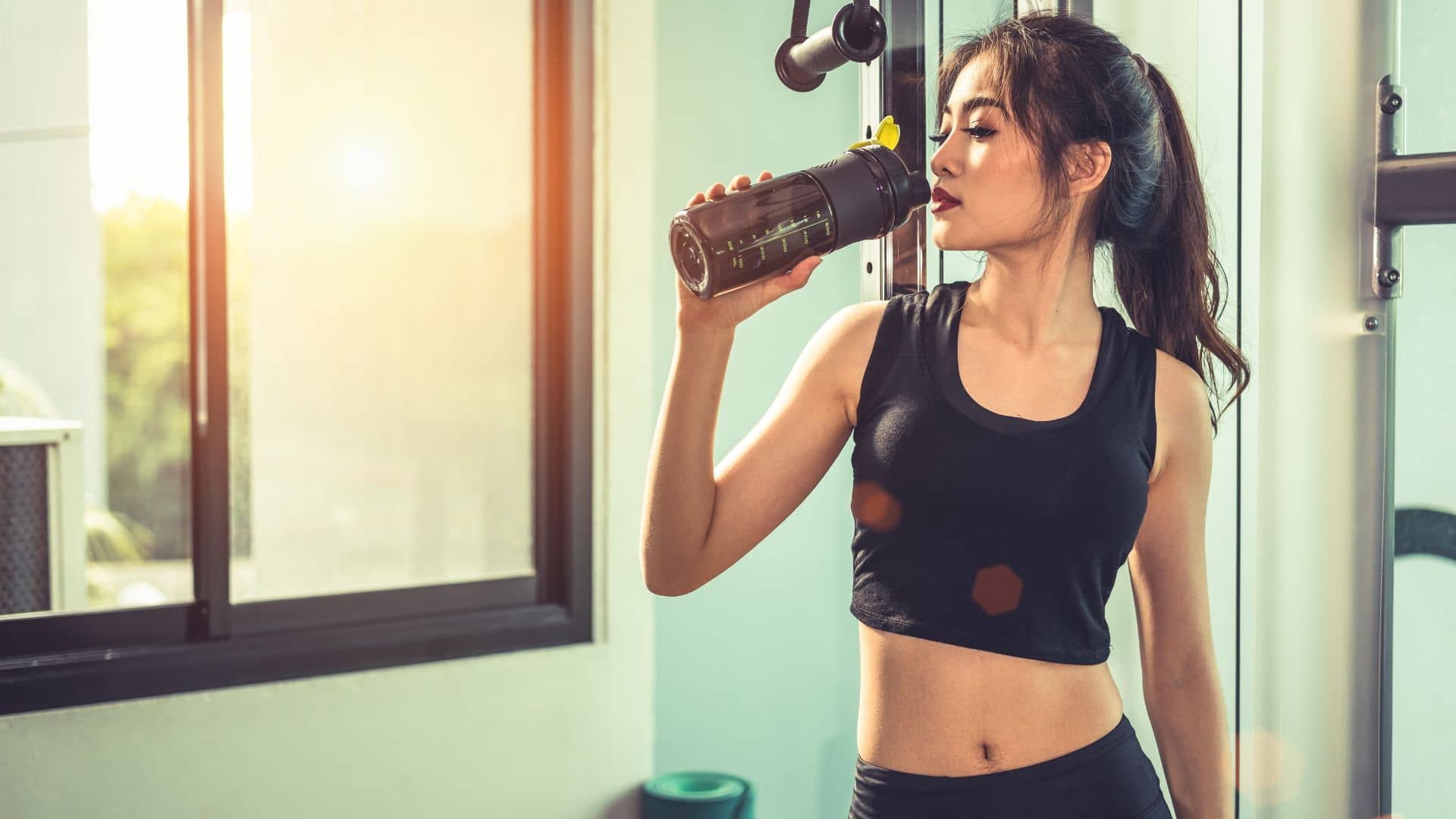Today, we’re diving into a fundamental aspect of fitness: hydration before squats. Whether you’re a seasoned lifter or just starting your fitness journey, understanding when and how much water to drink can make a significant difference in your squat performance and overall workout experience.
In this post, we’ll provide you with practical insights and guidelines to help you optimize your hydration strategy for those challenging squat sessions. So, let’s get started on the path to better workouts and better results!
Understanding if you Should drink water before squats and why.
Yes, it’s a good idea to drink water before squats to stay hydrated. Staying hydrated is essential for overall health and can help you perform better during your workout.
When you’re well-hydrated, your muscles and joints function more effectively, which can improve your squat performance and reduce the risk of injury.
Here are some specific recommendations:
Pre-Hydration: Drink water in the hours leading up to your workout. Aim to consume about 16-20 ounces (approximately 500-600 milliliters) of water 2-3 hours before your squat session.
During Exercise: Have a sip or two of water right before you start your squat workout to ensure you’re adequately hydrated. Take small sips between sets if needed, but avoid drinking too much at once, as it can cause discomfort during your workout.
Post-Exercise: After your squat session, continue to hydrate by drinking water to replenish the fluids lost through sweat during your workout.
Keep in mind that individual hydration needs can vary depending on factors such as your body size, activity level, and the environmental conditions.
Listen to your body, and if you feel thirsty during your workout, don’t hesitate to take a sip of water.
Proper hydration is an important part of any exercise routine, including squats, as it helps maintain your energy levels and promotes overall well-being.
Further Explanations.
Let’s delve deeper, let me explain these points mentioned further.
Pre-Hydration.
Let’s break down the recommendation to pre-hydrate with 16-20 ounces (approximately 500-600 milliliters) of water 2-3 hours before your squat session:
Timing:
The timing of your water intake is crucial. Drinking water 2-3 hours before your workout gives your body enough time to absorb and distribute the fluids effectively.
This ensures that you’re adequately hydrated when you start exercising.
16-20 Ounces (500-600 Milliliters):
This guideline suggests consuming roughly 16 to 20 fluid ounces of water, which is equivalent to approximately 500 to 600 milliliters.

This amount provides enough hydration without overloading your stomach, which can lead to discomfort during exercise. It’s a good balance between ensuring you’re adequately hydrated and avoiding the sensation of a full stomach while working out.
Hydration Benefits:
Pre-hydration serves several purposes:
Prevents Dehydration:
By drinking water in advance, you reduce the risk of starting your workout already in a dehydrated state, which can lead to fatigue, muscle cramps, and decreased exercise performance.
Maintains Fluid Balance:
Adequate pre-hydration helps maintain the proper fluid balance in your body. This is important because your muscles and joints require water for optimal function, and it helps regulate body temperature during exercise.
Digestive Comfort:
Drinking water 2-3 hours before your workout allows enough time for your body to absorb the fluids, reducing the chances of stomach discomfort or cramps during squats.
Individual Variations:
Keep in mind that individual hydration needs can vary based on factors such as body size, activity level, and environmental conditions (e.g., temperature and humidity). Some people may require slightly more or less water to stay adequately hydrated.
Overall, the recommendation to drink 16-20 ounces of water 2-3 hours before your squat session is a general guideline aimed at optimizing your performance, comfort, and hydration levels during the workout.
It’s a good practice to adopt, but you should also pay attention to your body’s signals and adjust your water intake accordingly to meet your specific needs.
During Exercise.
let’s delve into the recommendations for water intake during your squat workout:
Sip or Two Before Starting:
Taking a sip or two of water right before you begin your squat workout is a good practice. This helps ensure that you’re adequately hydrated as you start exercising.
These initial sips can also serve as a mental cue to remind you to stay hydrated during your workout.
Small Sips Between Sets:
It’s a good idea to continue taking small sips of water between sets or during short breaks in your workout.
These sips can help maintain your hydration levels and prevent excessive fluid loss through sweat.
Staying hydrated during your workout is essential to keep your muscles and joints functioning optimally.
Avoid Overconsumption:
While it’s important to stay hydrated, it’s equally crucial to avoid drinking too much water at once during your workout.
Drinking too much water too quickly can lead to discomfort, including bloating or a feeling of fullness in your stomach, which may hinder your performance and make you feel uncomfortable.

Listen to Your Body:
Pay attention to your body’s signals during your workout. If you start to feel thirsty, take a small sip of water to quench your thirst.
Avoid waiting until you feel extremely thirsty, as this can indicate that you’re already somewhat dehydrated.
Environmental Factors:
Be mindful of environmental conditions. If you’re working out in a hot and humid environment or for an extended period, you may need to increase your water intake to compensate for increased sweat and fluid loss.
In summary, the key to water intake during your squat workout is to strike a balance. Take small sips as needed to stay hydrated without overloading your stomach.
Listening to your body’s cues, staying mindful of the workout environment, and maintaining a consistent, moderate level of hydration throughout your session can help you perform at your best and reduce the risk of discomfort or dehydration-related issues.
Post-Exercise.
let’s explore the importance of post-exercise hydration and how to go about it effectively:
Replenish Fluids Lost Through Sweat:
After completing your squat session, it’s essential to continue hydrating to replace the fluids lost through sweat during your workout.
Sweating is your body’s way of cooling down and regulating temperature, but it also results in the loss of valuable fluids and electrolytes.
Hydrate Gradually:
When you’re done with your workout, start by drinking water gradually. You don’t need to chug large amounts of water all at once. Instead, take sips of water at a steady pace.
Listen to Your Thirst:
Pay attention to your body’s signals. If you’re feeling thirsty, that’s a clear indication that your body needs fluids.
Respond to this thirst by drinking water, but do so in a controlled manner to avoid overwhelming your digestive system.
Electrolyte Balance:
Depending on the duration and intensity of your squat workout, you may also consider replenishing electrolytes, especially if you’ve sweated profusely.
Electrolytes, such as sodium, potassium, and magnesium, are essential for muscle function and maintaining proper hydration. You can do this by drinking an electrolyte sports drink or consuming foods rich in electrolytes.
Rehydration Duration:
Continue to hydrate over the hours following your workout to ensure you fully replenish any fluid deficits. This is particularly important if you have additional physical activities planned for the day or if you’ve experienced significant sweat loss.
Monitoring Urine Color:
An easy way to gauge your hydration status is to check the color of your urine. Pale yellow to light straw-colored urine generally indicates good hydration, while dark yellow or amber urine can be a sign of dehydration. Aim for a light yellow color as a general guideline.
Avoid Overhydration:
While it’s crucial to rehydrate, avoid excessive water intake that might dilute your electrolyte balance.
Hyponatremia, a condition caused by drinking too much water without enough sodium, can be dangerous. Stick to moderate and balanced hydration.
In conclusion, post-exercise hydration is a crucial part of your recovery process after a squat session. It helps your body recover, prevents dehydration, and supports overall well-being. Gradually replenish the fluids lost through sweat, listen to your body’s signals, and consider electrolyte balance as needed to optimize your recovery and prepare for future workouts.
A tabular on this topic here.
Here’s a concise tabular overview of when and how much water to drink before squats:
| Timing | Amount | Purpose |
|---|---|---|
| Pre-Hydration | 16-20 ounces (500-600 ml) | Ensure adequate hydration 2-3 hours before squats. |
| During Exercise | Sip as needed | Maintain hydration during squats; avoid excessive intake. |
| Post-Exercise | Gradually rehydrate | Replenish fluids lost through sweat post-squat session. |
This table provides a quick reference for your hydration strategy before, during, and after squats, emphasizing the timing and amount of water intake at each stage.
Conclusion.
In conclusion, it’s advisable to follow a well-balanced hydration plan when preparing for squats.
This plan includes pre-hydration with 16-20 ounces of water 2-3 hours before your workout, sipping water as needed during squats while avoiding overconsumption, and gradually rehydrating post-exercise to replace fluids lost through sweat.
Staying mindful of your body’s signals and maintaining proper hydration can enhance your squat performance and overall well-being.

Hey there, it’s Mike Rrsq, the Editor-in-Chief over at Jsquat.com, and I’m absolutely obsessed with all things squat fitness! I’ve been lucky enough to get some serious recognition for my work in this field. With a solid background in the fitness and wellness industry, I’ve been there right from the get-go, helping shape this website into what it is today.
You see, I’m not just the boss around here; I’m also a passionate contributor. I love sharing my insights through my articles, and trust me, they’re not your run-of-the-mill stuff. Each piece I write is a labor of love, filled with my expertise and real-world experience in the fitness universe. So, if you’re into fitness and looking for some inspiration, you’re in the right place!


